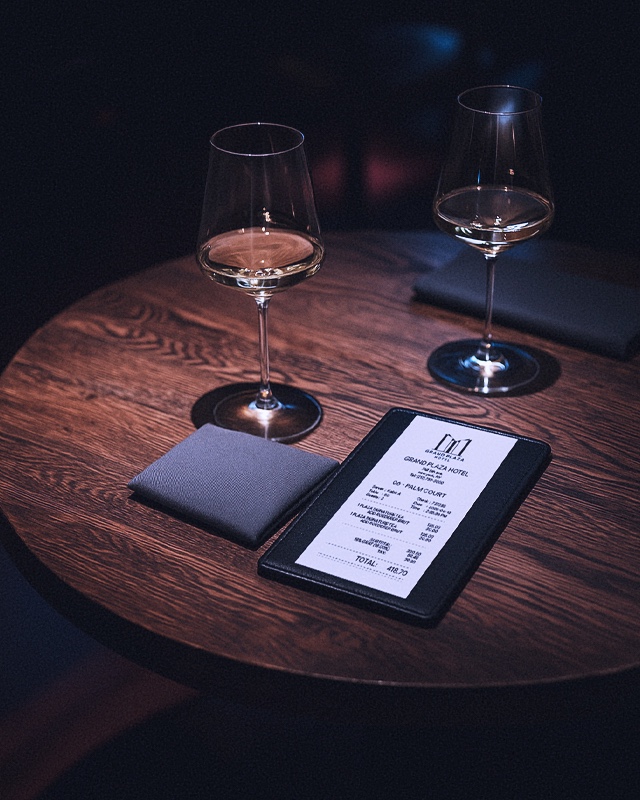The Hidden Science of First Date Chemistry
You’re halfway through a drink you don’t even like, and you’re suddenly smiling for no reason. You’ve stopped checking the time. You’re listening, laughing, leaning in. Something’s happening. Something you can’t quite explain. That’s chemistry. Or is it?
We talk about it like magic. The spark. The click. The elusive “it.” However, behind that electric first-date moment lies a complex interplay of psychology, biology, and behavior. Sometimes it really is magic. Often it’s your brain playing tricks. And occasionally—here’s the twist—it’s your trauma pattern in disguise. But more about that later.
Not Just Looks: What IS Chemistry?
We’ve been conditioned to think chemistry is mostly about physical attraction. That it’s about feeling weak in the knees or experiencing cinematic eye contact across a crowded room. But the real story is more layered.
Chemistry is about resonance. It’s how two people’s energy, communication style, sense of humor, and emotional presence bounce off each other. In short, it’s a blend of emotional safety and intrigue. Yes, physical attraction plays a role, but so does how someone makes you feel in their presence—seen, curious, comfortable. Activated.

In online dating communities, daters describe chemistry as “easy conversation,” “natural banter,” or “a weird sense of déjà vu.” But not all chemistry is created equal.
The Dopamine Dilemma: Why It Feels So Good
When we’re attracted to someone, our brains release a surge of dopamine, the same neurotransmitter that lights up when you eat chocolate, win at slots, or splurge on something you didn’t really need. It’s pure reward circuitry—your brain’s way of saying, Yes, more please.
This is why first-date chemistry feels like a mini high. According to Rutgers University researchers, dopamine-rich attraction activates the same brain regions linked to motivation, pleasure, and addiction. That flutter in your chest? That rush of “this could be it”? It’s not just emotion. It’s neurological stimulation.
Dopamine, however, isn’t picky. It doesn’t measure values, life goals, or long-term compatibility. It just responds to novelty, attention, and excitement. Which means someone may feel amazing on night one—and be entirely wrong for you by week three.
So, if you feel the high, don’t panic—but also, don’t propose on date two. Although the buzz is real, lasting connection requires more than brain chemistry. It requires clarity, intention, and the willingness to wait for something more profound than a dopamine rush.
Trauma Bonds: When Chemistry Isn’t Chemistry
Sometimes what we interpret as “instant chemistry” is emotional familiarity. That rush of connection might feel thrilling because it echoes something deeply rooted—an old relationship dynamic, an unresolved childhood pattern, even a fight-or-flight response disguised as butterflies.
Amy Chan, founder of Renew Breakup Bootcamp, refers to this as your “chemistry compass.” It’s why we keep feeling drawn to people who aren’t right for us—because their energy feels recognizable, not necessarily healthy.
The Rutgers study proposes that, for some, romantic rejection is a specific form of addiction. Getting dumped activates the same brain regions involved in motivation, pleasure, and addiction. The study highlights the overlap between these seemingly distinct brain functions and how they are all influenced by dopamine. The nervous system doesn’t always distinguish between excitement, danger, or disappointment. And if chaos feels like home, calm might feel boring—even when it’s what you need.
The lesson? Not all sparks should be chased. Sometimes, the strongest pull comes from unhealed places. What feels like chemistry may be a cue to pause—not proceed.
Slow Burn > Fireworks?
If you’ve ever walked away from a date thinking, “They were nice, but there was no spark,” pause before writing them off. Emma Hathorn, dating expert at Seeking, reminds us that chemistry doesn’t always hit on the first sip.
“In fact, the strongest relationships often grow into chemistry,” Hathorn says. “The best connections are built on safety, shared values, and emotional reciprocity—not dopamine.”
So, don’t discount someone just because they didn’t immediately make your pulse race. Long-term love is less about fireworks and more about firewood—the kind that sustains warmth over time.
How to Build Chemistry (Yes, You Can)
You can’t fake chemistry, but you can create the conditions for it to bloom. Here’s how:
- Be curious: Ask unexpected, open-ended questions.
- Share vulnerability: Admit a quirk. Laugh at yourself.
- Be present: Eye contact, body orientation, and active listening work wonders.
- Mirror body language: Subtle mimicry—leaning in, smiling, and nodding—builds subconscious trust.
- Lighten up: Playful teasing and shared humor go further than a resume rundown.
Hot tip from FirstDate: Want to know if there’s a vibe? Mention an embarrassing story or a personal goal. If they lean in and match your energy, chemistry might just be brewing.
Chemistry May Be Easy. Clarity Isn’t.
Every dating platform promises connection. Most sell it through instant attraction, fast swipes, and viral love stories. However, the truth is that in 2025, the dating world is saturated with chemistry but starving for clarity.
It’s not hard to spark something. A good photo, a flirty opener, the right emoji—suddenly, there’s a “vibe.” But what happens after that? Where does the conversation go? How often does it lead to something real? That’s the gap most platforms haven’t figured out how to close.
Apps built around volume tend to reward the beginning: the match, the spark, the first message. They optimize for attraction, but not for alignment. But they rarely help users sustain anything meaningful beyond the initial rush. The result? Lots of conversations, few connections. A cycle of chasing chemistry with no clear sense of direction.
And, according to research conducted by Seeking, this is precisely where the platform distinguishes itself—and, in many ways, redefines the dating experience. In a culture dominated by ambiguity and passive phrases like “let’s see where it goes,” Seeking takes a different approach: it asks users to define where they want it to go, and then gives them the tools to get there. The findings are clear—when people lead with clarity, connection becomes far more meaningful. That insight shapes the entire community. Members are intentional. Profiles communicate purpose. Conversations move beyond small talk to genuine compatibility. You’re not left wondering about mixed signals or hidden agendas. From the outset, everyone’s on the same page.

Trust the Mystery—But Don’t Chase the High
Part of what makes dating so fun is its unpredictability. You can’t always explain why someone lights you up—and that’s okay. We’re not meant to reduce every feeling to a flowchart.
But understanding the mechanics of chemistry can make you a smarter, more grounded dater. When you know the difference between “this feels electric” and “this feels right,” you date with confidence.
FirstDate Final Thought: When You Know, You Know
You can’t force chemistry, but you can learn how to read it, trust it, and refine it.
And when it clicks, you’ll know.
Not just because it feels good, but because it feels true.








